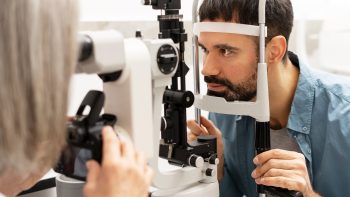
If you don’t wear glasses or contacts, it’s easy to assume eye exams aren’t a priority. But preventive eye care is about much more than your ability to read the bottom line of a chart. A routine eye exam can be one of the few noninvasive windows into what’s going on inside your body—sometimes revealing serious health issues before other symptoms appear.
Whether or not you have vision complaints, comprehensive eye exams can offer early clues about conditions that affect your heart, brain, metabolism, and more.
Your Eyes: A Front Row Seat to Vascular Health
The retina at the back of your eye is the only place in the body where a doctor can see blood vessels in action without surgery. That’s why early signs of high blood pressure, high cholesterol, or diabetes sometimes show up in your eyes before they’re picked up elsewhere.
Ophthalmologists and optometrists may spot:
- Swollen or narrowed blood vessels (hypertension)
- Retinal bleeding or microaneurysms (diabetes)
- Changes in blood vessel color or blockages (cholesterol buildup)
In some cases, people have learned they have type 2 diabetes or dangerously high blood pressure during a routine eye exam—prompting faster treatment and preventing more serious complications down the line.
Eye Exams and Neurological Clues
Changes in your vision or eye movements can also signal problems in the nervous system. During a comprehensive eye exam, your doctor may test how well your pupils react to light, how your eyes track movement, and whether your peripheral vision is intact.
This can help detect early signs of:
- Multiple sclerosis
- Brain tumors
- Aneurysms or stroke risk
- Parkinson’s disease
- Thyroid eye disease
It’s not about diagnosing these conditions outright, but about catching subtle red flags that warrant further medical follow-up.
Glaucoma and Silent Damage
Glaucoma is often called “the silent thief of sight” because it can cause permanent vision loss before you notice symptoms. Regular exams that measure eye pressure and inspect the optic nerve are the only way to detect this condition early—while it’s still manageable.
Left untreated, glaucoma can lead to irreversible blindness. With routine screening, it can often be slowed or even halted.
Other Conditions That May Be Spotted in the Eye First
Preventive eye exams have uncovered signs of:
- Autoimmune disorders (like lupus or rheumatoid arthritis, which can inflame parts of the eye)
- Liver disease (through yellowing of the whites of the eyes)
- Certain cancers (melanoma, leukemia, or lymphoma that may affect eye tissue)
Again, the eye exam doesn’t diagnose these conditions directly, but it can alert you—and your primary care provider—that something deeper may need investigating.
Adding This Layer to Your Health Strategy
Preventive care isn’t just about labs and blood pressure cuffs. Eye exams offer a unique vantage point, helping uncover health issues that might otherwise stay hidden until they’ve progressed.
So even if your vision feels fine, that appointment with the eye doctor might be one of the smartest moves you make for your overall well-being. It’s not just about seeing more clearly—it’s about understanding your health from the inside out.



